
home about us contact us subscribe

home about us contact us subscribe
|
|
|
|
Exhibition: "US Design - 1975-2000" at the Denver Art Museum
A quintessential American city celebrates a quarter-century of American-based design. by ArchNewsNow March 21, 2002 “Things
and Change: How Life Shaped Design (and Design Shaped Life)” – Thomas Hine The
Denver Art
Museum (DAM) recently opened “US Design - 1975-2000.” From teapots
to toys, posters to post-modernism, garbage cans to Web sites, the exhibition celebrates
– and critically accesses – some of the most exciting work produced by
American-based designers during the past 25 years. With more than 250 objects
and images representing architecture, decorative design, graphics, and
industrial design, the show is one of the first efforts by an American museum
to demonstrate the United States' important contribution to international
design. Following the Denver run through May 26th, the exhibit will
travel to Miami, New York, and Memphis. It is an interactive experience that presents many
of the major theoretical and cultural issues that shaped the design arts during
the last quarter century and documents the accomplishments of three generations
of American designers. “US Design”
includes Robert Venturi, Frank Gehry, and Deborah Sussman; a middle generation
including artists such as Thom Mayne, Steven Holl and Katherine McCoy; and
exceptional younger designers just now emerging to prominence, including Karim
Rashid, Christopher Deam, and Ross Menuez. It took the museum’s curator R. Craig Miller five
years to assemble a team of leading design arts scholars and critics to
research and organize the exhibition and accompanying catalogue (which should be a
required addition to every architecture and design library for both the literary
and pictorial content). Thomas Hine and Rosemarie Haag Bletter examine the
cultural and theoretical issues that have shaped American design from 1975 to
2000. Other members, including David G. De Long in architecture, Miller in decorative
and industrial design, and Philip B. Meggs in graphics, have selected objects
for the exhibition and written essays for the catalogue in their respective
areas of expertise. The team has examined the design arts within the
show itself from scholarly and aesthetic viewpoints, and has organized the
exhibit around four major concepts to demonstrate how these developments
transcend all media of the design arts field: Inventing Traditions: In the late 1970s and
'80s, American designers attempted to create a rich visual vocabulary that
would be readily understandable to the public – a movement that is now often
referred to as Postmodernism. Celebrating the Everyday: Other designers also
reacted to the prevailing Modernism of the 1960s and '70s, but took their
inspiration from popular or vernacular aspects of design. They often employed
"found" objects and everyday materials and forms, often using their
work as a means of addressing crucial environmental, political, or social
issues. Redefining Expressionism: Still other American
designers sought a new direction by pursuing a highly conceptual and
theoretical approach. Deconstructivism is a term frequently applied to this
movement. Complex sculptural and layered forms – often highly personal in nature
– characterize much of this work. Indeed, in many cases this design could only
be achieved by new computer technology. Expanding Modernism: One of the most compelling
aspects of the exhibit is the proposition that a younger generation of
designers drew inspiration from earlier Modernist work but from a broader, more
encompassing perspective. They employ new technology, color, materials, and
even ornament in a poetic manner. Following the Denver show, “US Design 1975-2000” will travel to the Bass Museum of Art,
Miami, Florida (February 15 - May 10, 2003), the American Craft Museum, New
York City (June 19 - September 28, 2003), and the Memphis Brooks Museum of Art,
Memphis, Tennessee (November 30, 2003 - February 29, 2004). The fully illustrated 256-page catalogue, co-published by
Prestel, includes 100 color and 180 black-and-white photographs of the objects
in the exhibit and essays by the exhibition’s team of scholars. Funding for this exhibition is provided by the Luce Foundation, Daimler-Chrysler Corporation, John G. Duncan Trust, the National Endowment for the Arts, Accenture, M.A. Mortenson Company, Ludlow-Griffith Foundation, Gay and Lesbian Fund for Colorado and the citizens who support the Scientific and Cultural Facilities District. Promotional sponsors include The Denver Post, Colorado Homes & Lifestyles Magazine and The Integer Group. |
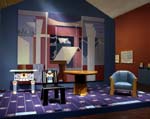 (Photo: Bill O'Connor, Denver Art Museum) Louis XVI Chest of Drawers, 1984, Sheraton 664 Side Chair, 1979-84, by Robert Venturi. Dining Table, 1989, Lounge Chair, 1980-81, by Michael Graves. Vanilla Fudge Chaise Lounge, 1998, by Ross Menuez. Plastic and metal; 96 1/2 x 13 x 96 1/8 in. Manufacturer: Ross Menuez. Collection of Totem Design Group LLC. Vanilla Fudge Chaise Lounge, 1998, by Ross Menuez. Plastic and metal; 96 1/2 x 13 x 96 1/8 in. Manufacturer: Ross Menuez. Collection of Totem Design Group LLC. Forecourt Façade Study, Clos Pagase Winery, 1984-87, by Michael Graves. Collection of the architect. Forecourt Façade Study, Clos Pagase Winery, 1984-87, by Michael Graves. Collection of the architect.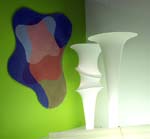 (Photo: Bill O'Connor, Denver Art Museum.) Soft Carpet, 2000, by Karim Rashid. Collection of Totem Design Group LLC. Hula Hoop and Oval Lighting, 1987, by Gisela Stromeyer. Collection of Gisela Stromeyer Design.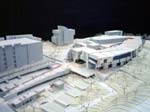 Model, Aronoff Center for Design and Art, University of Cincinnati, 1988-96, by Peter Eisenman. Collection of University of Cincinnati Fine Arts. Model, Aronoff Center for Design and Art, University of Cincinnati, 1988-96, by Peter Eisenman. Collection of University of Cincinnati Fine Arts. Bubbles Chaise Lounge, 1979-82, by Frank O Gehry. Designed for the Experimental Edges Series. Cardboard; 34 x 82 x 28 in. Manufacturer: New City Editions. Collection of Denver Art Museum; gift of J. Landis and Sharon S. Martin. Bubbles Chaise Lounge, 1979-82, by Frank O Gehry. Designed for the Experimental Edges Series. Cardboard; 34 x 82 x 28 in. Manufacturer: New City Editions. Collection of Denver Art Museum; gift of J. Landis and Sharon S. Martin.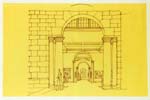 Perspective of Galleries, Sainsbury Wing, National Gallery; 1985-91; by Robert Venturi and Denise Scott Brown. Collection of the architects. Perspective of Galleries, Sainsbury Wing, National Gallery; 1985-91; by Robert Venturi and Denise Scott Brown. Collection of the architects. Model, Hight House, 1992-96, by Bart Prince. Collection of the architect. Model, Hight House, 1992-96, by Bart Prince. Collection of the architect.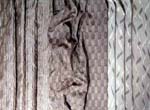 Lyons, Hagge, The Pollack Studio; Minor Miracle Textile, 2000, Crystal Pleat Textile, 2001, Scheherazade Textile, 2000; Collection of DesignTex, Inc., Suzanne Tick, Denver Art Museum (Gift of POLLACK). Lyons, Hagge, The Pollack Studio; Minor Miracle Textile, 2000, Crystal Pleat Textile, 2001, Scheherazade Textile, 2000; Collection of DesignTex, Inc., Suzanne Tick, Denver Art Museum (Gift of POLLACK).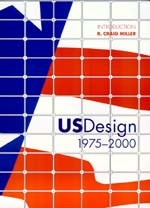 US Design 1975-2000 Catalog with introduction by curator R. Craig Miller. US Design 1975-2000 Catalog with introduction by curator R. Craig Miller. |
© 2002 ArchNewsNow.com